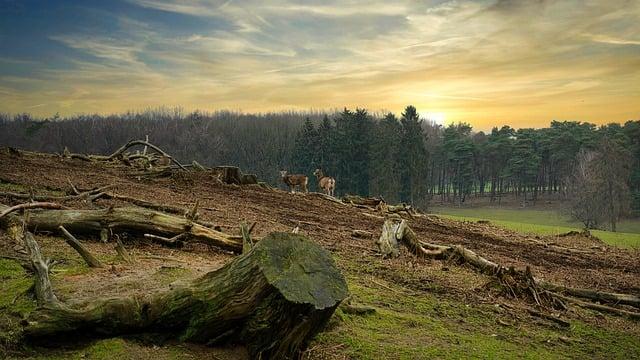- Introduction
- Challenges in Forest Conservation
- Effective Solutions
- Community Involvement
- Role of Technology
- Conclusion
- FAQs
Introduction
Forest conservation is critical to maintaining biodiversity, combating climate change, and preserving ecosystems. This article explores the challenges faced in forest conservation and the innovative solutions being implemented to protect these valuable resources.
Challenges in Forest Conservation

(Image: Pixabay/@Bernhard_Schuermann)
Deforestation, illegal logging, urbanization, and wildfires are major threats to forests worldwide. These activities have led to the loss of crucial habitats for countless plant and animal species, endangering biodiversity.
In addition, the exploitation of forests for commercial purposes without sustainable practices has resulted in soil erosion, water pollution, and disrupted carbon cycles, exacerbating climate change.
The lack of regulatory enforcement and awareness among communities further complicates efforts to conserve forests effectively.
Effective Solutions

(Image: Pixabay/@MabelAmber)
To address these challenges, various strategies have been adopted to promote forest conservation. Reforestation and afforestation projects aim to restore degraded forests and establish new forest cover, helping to offset carbon emissions and restore biodiversity.
Sustainable logging practices, certification programs like FSC (Forest Stewardship Council), and ecotourism initiatives play a key role in promoting responsible forest management and supporting local economies.
Educational campaigns, policy advocacy, and international cooperation efforts are essential in raising awareness about the importance of forests and mobilizing action at local, national, and global levels.
Community Involvement

(Image: Pixabay/@geralt)
Engaging local communities in forest conservation is vital for long-term sustainability. Empowering indigenous tribes and local residents to participate in decision-making processes, conservation projects, and sustainable land-use practices helps foster a sense of ownership and responsibility towards forest resources.
Implementing community-based forest management models, where communities benefit from protecting forests through incentives like eco-tourism revenue sharing or sustainable resource harvesting, can create economic alternatives while safeguarding ecosystems.
Partnerships between governments, NGOs, and local communities are crucial for fostering collaborative approaches to forest conservation that respect traditional knowledge and promote social equity.
Role of Technology

(Image: Pixabay/@lukasbieri)
Advancements in technology offer innovative tools for monitoring and managing forests more efficiently. Satellite imaging, drones, and remote sensing technologies enable real-time tracking of deforestation, illegal activities, and forest health, enhancing surveillance and enforcement capabilities.
Data analytics, machine learning algorithms, and blockchain applications help analyze large datasets to identify trends, predict forest threats, and ensure transparency in the timber supply chain, reducing the risk of illegal logging and promoting sustainable practices.
Mobile apps, online platforms, and geospatial mapping tools empower stakeholders to report forest-related issues, access knowledge resources, and engage in collaborative conservation efforts, democratizing the process of safeguarding forests.
Conclusion
Forest conservation requires a multi-faceted approach that addresses environmental, social, and economic dimensions. By recognizing the value of forests beyond their immediate resources and implementing holistic strategies that involve diverse stakeholders, we can work towards a sustainable future where forests thrive alongside human development.
FAQs
Why is forest conservation important?
Forest conservation is crucial for preserving biodiversity, mitigating climate change, ensuring clean water sources, and supporting livelihoods of communities dependent on forests. By protecting forests, we safeguard vital ecosystem services that benefit both nature and humanity.
How can individuals contribute to forest conservation?
Individuals can support forest conservation by practicing sustainable consumption, participating in tree-planting initiatives, supporting environmentally friendly products, and advocating for policies that prioritize forest protection. Small actions collectively make a significant impact on preserving our forests for future generations.

